
What Would (a) Bacon-nut Do?
Recipes: Kombu + Freekeh cured Bacon (Beta), Bacon Bratwurst.
A few weeks back bacon enthusiasts gathered in the hip Logan Square neighborhood to sample bacon creations from some of Chicago's top chefs, to peruse porcine products from vendors and to worship at the larded altar of cured belly. Yes it was the second running of Baconfest Chicago. I can't really say I'm a bacon enthusiast, it's like saying I'm a breathing enthusiast, but breathing enthusiasts probably participate in marathons...I'm not doing that either... Even though I have pontificated about bacon in previous posts, I didn't think I needed to attend a fetish convention. That is until they announced an amateur bacon bake-off.

Oh boy, I have never entered a contest before, but I excitedly submitted my bacon bratwurst recipe. It proved very popular at Oktoberfest last year.
While I waited for an answer, I plotted my entry. The bacon I make is a pantry staple, nothing extreme or fancy, just bacon, a team player willing to lend it's smoky goodness to any situation. But now.....If I'm gonna be competing with baconphiles, I need to bring my A-game, I need a bacon with unattainable ingredients cured in a an unimaginable brine. I need to go gourmet.
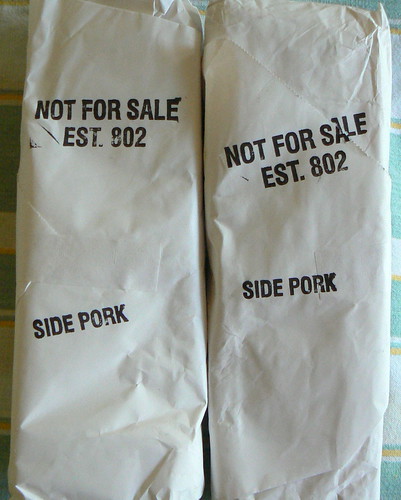
Call in the Rod
So my friend Rod, has a brother, or is it a cousin, who has a farm out by Iowa City, he keeps a few hogs. Rod got one. When he ran out of room in his freezer he sent me a few packages.
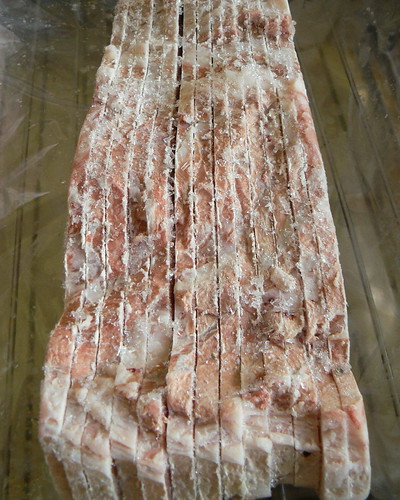

Unattainable beautiful side pork ready to cure. Now for the never before imagined brine:
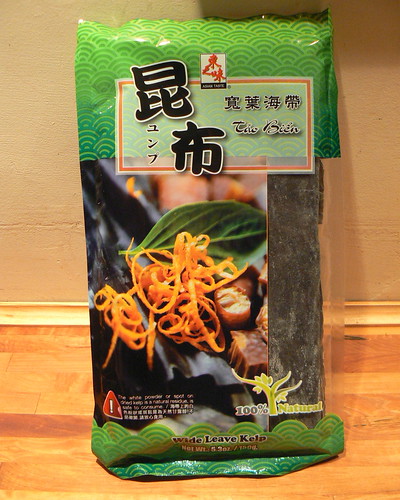

I knew I wanted to use some Kombu for its umami properties (I talk about kelp powder in a previous post), and I wanted to try some Lapsang Souchong tea to add smokiness to the brine. But I forgot to buy tea, so I went with my favorite smoked grain, Freekeh.
Kombu + Freekeh Brine (Beta)
2.5 L water
225g Salt
250g Sugar
150g Freekeh
22g (One sheet) Kombu (kelp)
10 g black peppercorns
5g whole coriander
5g mustard
2 fresh bay leaves (now that's gourmet!)
Combine all ingredients in a non-reactive pot and boil for two minutes. Chill before using.

I covered the bacon with the brine and let it soak overnight. The next day I let the bacon air dry in the fridge before smoking. That night I fired up the smoker. I hot smoked the slices for a half an hour, just enough time to snap a publicity photo (In case I had to sign autographs at the contest).
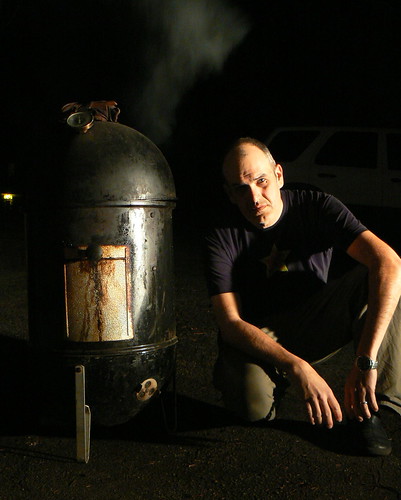
I'm ready for my close-up.

The bacon is made time to make a contest.
[BEEP BEEP -THE TELETYPE STARTS TAPPING A MESSAGE]
Oh, Someone is ringing across the Telex. It's Andre Vonbaconvitch from BaconFest Chicago:
Hi Mac,
We love these Brats. It was SO close to making the cut. Just wanted you to know it really does look delicious - and we're sorry we couldn't include it this year. Thank you so much for submitting.
[TELETYPE STOPS TAPPING]
[Pause]
Oh.
I made the sausage anyway. Running the stuffer cheers me up. Besides I didn't want have to wear a funny bacon hat.

Drei im weggla.
I was not about to stuff bacon willy-nilly into a sausage just to impress some trenchermen, I wanted a sausage with pedigree, so I cracked open my $5 copy of Larousse Grastronomique. I found many worthy sausages that are made with bacon, but brat from Nuremburg caught my eye. Nuremberg sausages are famous for thin and short. I read on one cultural website that the tourist should say "Drei im weggla! (three in a roll!)" to order this regional specialty. Here's my recipe:
Bacon Bratwurst
4 lbs/1.8Kg ground pork
14 oz/400g bacon (coarsely ground)
27 g salt
7g black pepper
3g marjoram
3g ground mustard
1g thyme
1g mace
water
Beat together all ingredients using a really big spoon or with the paddle attachement on a stand mixer, Add upto a cup of cold water to make a smooth mixture. Stuff into sheep casings. For the authentico look, fry in an Albert Turk Forged Iron Pan, serve three on bun.

I would try again next year, but in the past month I have lost my amateur status. Happy cooking.
Cheers.
26 April, 2010
WWBD?
15 March, 2010
The Ultimate Breakfast Sausage Recipe
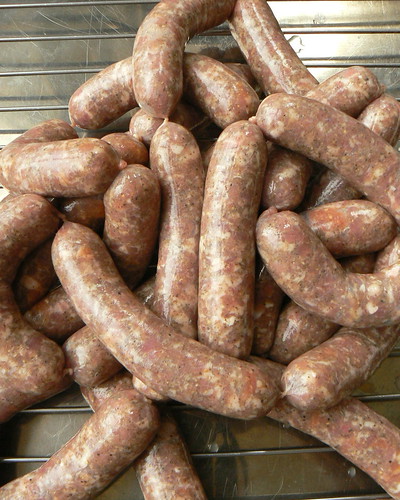
Savory Breakfast Sausage Recipe.
After several weeks of research, thirteen pounds of pork shoulder, numerous taste tests, I collated the comments (i.e. what's that flavor?), tabulated the results, and today I present to you the Ultimate Breakfast Sausage Recipe.
I sent myself on this quest, after longtime reader, George from Ohio, wrote for a recipe. I felt bad (and never responded) because I did not have an answer. Well George, this one's for you, The Ultimate Breakfast Sausage recipe.
[BEEP BEEP] Wait, stop the Dictaphone, I'm getting a message across the Telex. It's the Beard Foundation.
[CLICKING NOISES, THE PHONE RINGS]
Yes, yes I understand.....But I have documentation showing the decline of American Cuisine starting in 1896....Uh-huh, why yes there was a distinct American cuisine that started with the earliest settlers, but this is about a truly American sausage, and I have discovered....
[INDISTINCT MUMBLING]
Ok I will tell them.
[THE PHONE RINGS AGAIN, IT CONTINUES TO RING]
Sorry about the interruption, it has been brought to my attention, that I do not have the Ultimate Breakfast Sausage Recipe, it actually rates only fifth or sixth...out of seven.

When I started my search the first thing I did was scratch the word "Breakfast" and replaced it "Country." We have been making Country Sausage in America for centuries. In his book Cutting-up in the Kitchen, Merle Ellis* decribes Country style sausage with sage. He tells how his grandma would stuff the sausage mixture into 3 x 12" muslin bags called 'pokes," then simply cut rounds as needed for breakfast. Jerry Predika's The Sausage-Making Cookbook, lists nearly thirty recipes for country or farmer's sausage. But the oldest recipe I found was in Mary Randolph's The Virgina House-Wife. First published in 1824, it's America's first cookbook. Randolph's recipe, found on page 66, calls for salt, pepper and sage. She notes that "(The) Sausages are excellent made into cakes and fried." Let's start there.
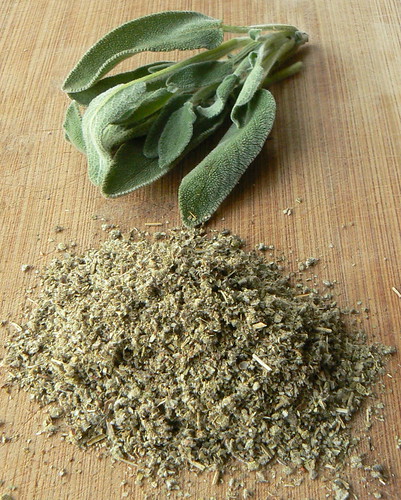
Old Sage
Just like many foodies before me, I have chortled at the notion of using dried herbs. Fresh is better and with the convience of modern groceries (and gardening) I can get a variety of fresh herbs. But wait, did I just pay three bucks for an ounce of "fresh" sage? Yeouch. I decided once and for all to compare fresh to dried, and I have concluded that dried is fine for sausage. For my tastes using 1/2 the measurement of dried sage for fresh is good. So, am I buying dried sage? No, I did for this project, but I grow my own. Do I carefully harvest and dry sage leaves? No...
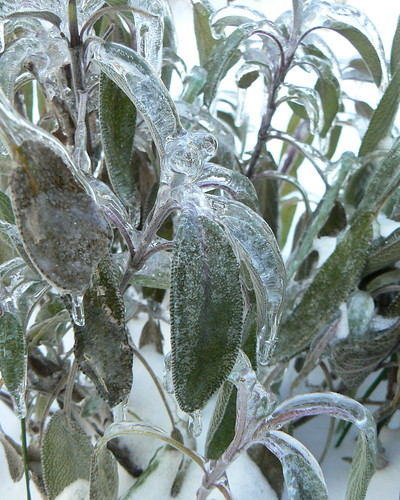
I just grab whatever I can find in the snow and go with it. Growing sage is pretty easy, it's a perennial(it comes back year after year) and as you can see you can grab leaves from it anytime.
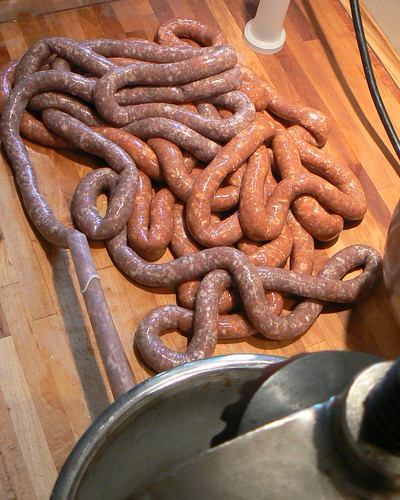
With Randolph's recipe in hand I made some sausage. Was it the Ultimate Breakfast Sausage? Not really. I started thinking about the flavors I wanted, I asked my wife (Bonne Femme), what she thought should go in it, and here's the recipe we finally settled on for the Ultimate Breakfast Sausage:
Savory Breakfast Sausage
1350g/3lbs Pork shoulder ground fine
20g/ 3tsp Salt
15g/ 1T Black peppercorns
18g/ 1/2c Dry rubbed sage
6g/ 1T Whole coriander
60g/2oz/ 1/4c Maple Syrup
120g/4oz/1/2c Water
Finely grind the spices with the salt and mix well into the ground pork. Beat in the maple syrup and water. Continue to stir until the mixture comes together. Stuff into sheep casings or form into 1 pound logs (Pokes). The logs can be wrapped and frozen then later sliced as needed. Fry until pink, do not overcook.
Here are a few additions I tried along the way:
Winter Savory. Another easy to grow perennial, it's flavor is a combination of Rosemary, thyme and mint. But be careful, this stuff is strong, no more than a gram per pound.
Fenugreek seeds. Ever since I read that the extract of this seed is used in maple flavoring, I wanted to use it. While the aroma is very 'mapley' it doesn't come through as well as actual syrup. This spice is an essential ingredient in many curries. It's a form of clover (Greek hay), I might try to grow it this year. In the sausage try 2 grams ground per pound.
Kelp powder. Don't tell the vegetarians I'm using kelp in sausage. Bonne Femme got this stuff for the dog, but I'm using it in bread baking. Scientifically it's Laminaria digitata, a form of brown seaweed. It's known as a superfood and it's loaded with iodine. I tried it in sausage because it enhances the umami, or as the pros say, it add some zip. Folks over in Japan have long known that seaweed triggers our taste buds just like monosodium glutamate. I don't really care one way or the other about MSG, but since I didn't have any, and I did have some kelp, I tried it out. It's noticeable, I want to play around with it some more. Try 1/4 teaspoon per pound.

So it's the Ultimate Breakfast Sausage Recipe, right? Well maybe not. While I was working on this project I happend to thumb through John Thorne's Mouth Wide Open: A Cook and His Appetite. In it he states:
"'Ultimate' recipes are something you earn, not find."
Boy if that ain't a sucker punch to the gut. I spend all this time cramming recipes through my "test kitchen" when I realize it's gonna take me a long time to perfect the Ultimate Breakfast Sausage recipe. In the meantime, YOU can make one too. You've got the basics, start with the three ingredients, and then think would what would taste good. Basil? Garlic? Thyme? Make it yours and it's gonna be good. If you have any questions I'm happy to help.

Cheers.
Resources used in this article (Links to WorldCat.org)
*Merle Ellis, I think he's still around, but the seventies and eighties he wrote a syndicated column called "The Butcher." He had a TV show and a catalogue, A true food star. I like his no nonsense approach. One day I wanna be in a movie where I try all his recipes. It's called MAC and Merle.
Try to find Ellis' Great American Meat Book, it pretty interesting.
The Sausage-Making Cookbook by Jerry Predika
The Virgina House-Wife by Mary Randolph, annotated by Karen Hess
About Savory and Sage, The Herbfarm Cookbook by Jerry Traunfeld
About Fenugreek, Cooking with Herbs and Spices by Andi Clevely et AL.
About Seaweed and MSG, The Oxford Companion to Food by Alan Davidson
Mouth Wide Open: A Cook and His Appetite by John Thorne, Matt Lewis Thorne
07 March, 2010
02 March, 2010
21 February, 2010
It's The Sauce
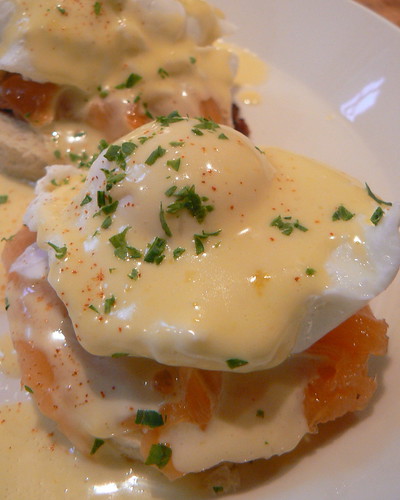
Making Gravlax for Salmon Benedict.
This is my absolute favorite breakfast. When Bonne Femme realized I was making a run the sauce this morning, she said, we're gonna eat it right? You're not gonna get mad and throw it away this time right?
I have a checkered past with hollandaise, at school I could bang it out with my eyes shut, I was teaching other folks how fix their slowly curdling pots. But at home it's been a different story; one way or another I wreck it, the last time I attempted it the emulsion broke so bad I could not imagine watching poeple eat it, I threw it away, and sauced with some Löwensenf. After that I determined that I would spend several days making lots of sauce nailing down the technique.

I never got around to making buckets of sauce, but last week Walt's had a sale on Salmon, so I knew the day would come again very soon when I would have to face the sauce. Salted salmon is a regular feature here on the blog, it's so easy to make, and so delicious, I think everybody should be making it.

It's salt sugar pepper and whatever seasoning sounds good
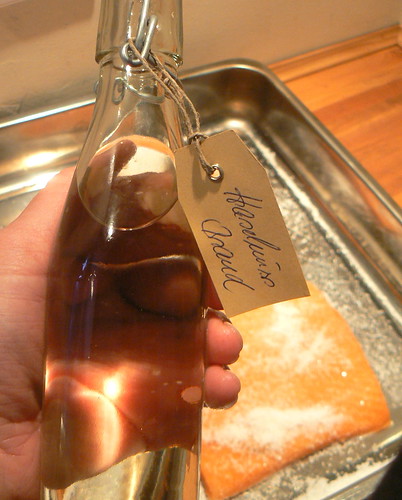
For this one I used some white pepper and hazelnut brandy.
As for curing time it can be anywhere from 18 hours to 3 days. I started this one Wednesday, so it has plenty of time to firm up.
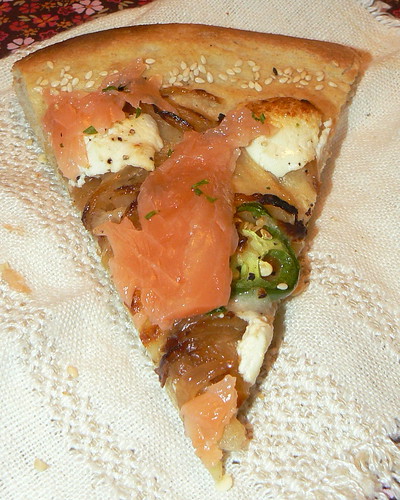
The cured fish made it debut at the Friday Night Pizza Party, on a pie with caramelized onion, goat cheese and jalapeño.
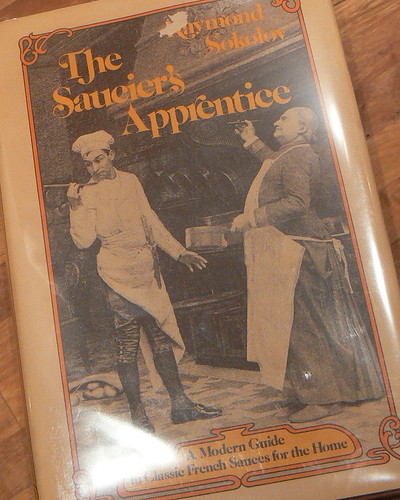
I have been thinking about hollandaise sauce all week, like Shaun White setting to drop in on the half pipe, I visualized my ingredients, my moves, but my nerves were a mess. I decided to chuck it and turn to something completely different. The Saucier's Apprentice, by Sokolov (A gift from my Grandma and my Uncle), is very good introduction into the world of sauce and the hollandaise recipe rocked: No double boiler, no blender, no cold butter. The gravlax could not have been any happier with brunch on a Sunday morning.
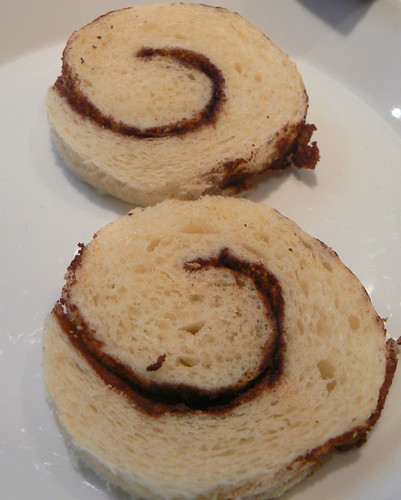

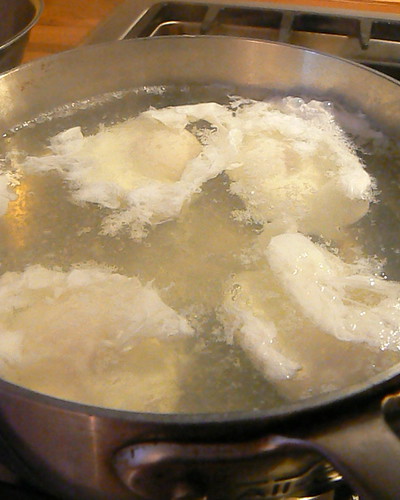
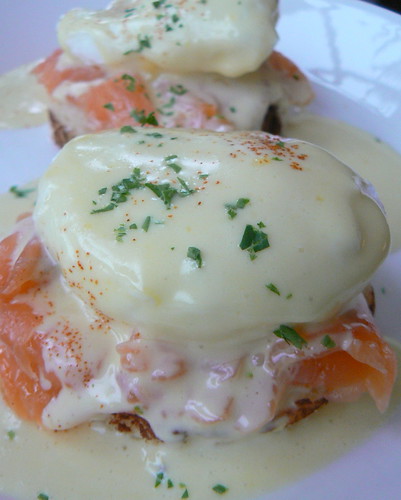
Cheers.
Links
MAC on Gravlax Nation
The Saucier's Apprentice by Raymond Sokolov
10 February, 2010
On the Snail Trail
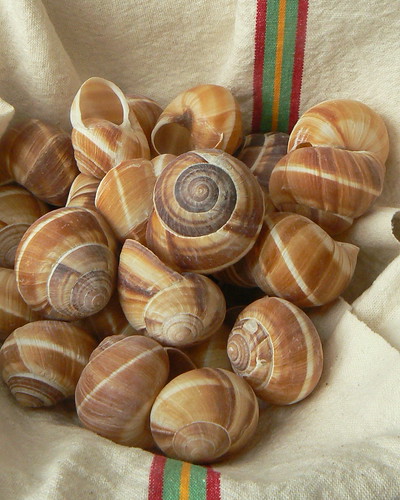
Recipes
Escargot de Conserve à la Bourguignonne
Mock snail of cœur de porc
Mock snail of champignons farcis
This story started with a resolution. Sometimes in honor of the New Year, I concoct some stand that may sound outrageous, but in reality is no big deal. Past resolutions included not going to McDonald's (kept that one for several years till I had kids), No Starbucks (I still don't buy drinks but it's the only nearby place to find a New York Times), and once I pledged to use butter on bread only when it had been freshly baked (that one was kinda hard, but helpful). This year I announced to my family that I would not cook with any ingredient that required the use of a can opener. My proclamation was met with a shrug. With the exception of coconut milk and occaisional can of frejoles, our household has led a mostly canless existence. It has been going in this direction since culinary school a few years ago. I remember when I started I thought, "I'm not going to school to learn how to use a can opener," and of course, the first thing we did was crack open #10 cans of tomato paste to make brown stock. Going canless led me to think about several things such as: What convienence does a canned good offer over technique, or what fresh ingredient could I use instead of an exotic canned one? My quest is not about vilifying metal containers or the processed products therein, I mean if I want to make something special that requires canned artichokes, I'm gonna go buy a can of artichokes. But can you name any dishes that are rooted in some great culinary tradition, that require a can opener? So far I have brown stock and green bean casserole.

Before I made this grand and sweeping change in my life I thought about what would I miss: I learned how to make coconut milk from shredded coconut, and cooking dried beans is very easy (hint: you don't need to soak them overnight) so, I thought and I thought....
Snails.
I had never bought a can snails, but I'd thought about it a lot ever since a Bistro class at Kendall. The instructor had been a chef at French place in Evanston and he said since snails are not cultivated here, the only way to get them was in a can from France. He had us liven up the canned gastropods by sautéing them in butter with a splash of white wine before stuffing them. The taste isn't particularly exotic, but its good, and reminds me of fun times in France.
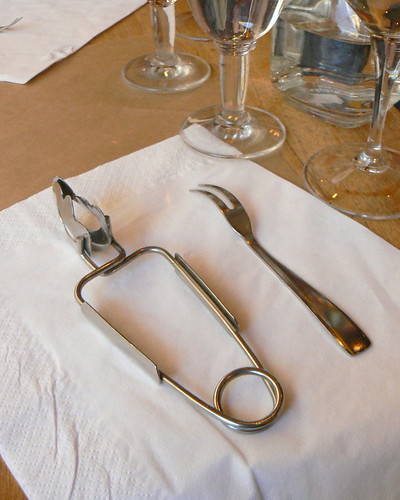
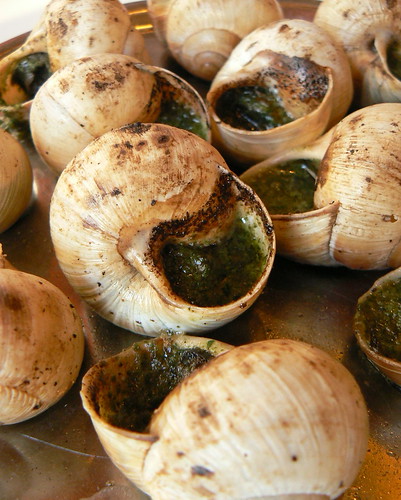
The last time I had snails was at Cafe Deguerre with my sister.
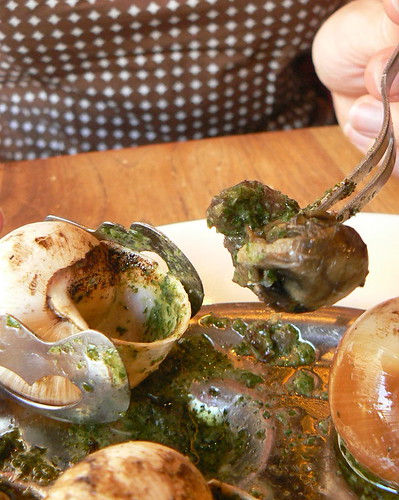
With these memories in mind, and the new knowlege of how easy it is to prepare snails, I was ready to buy a can.
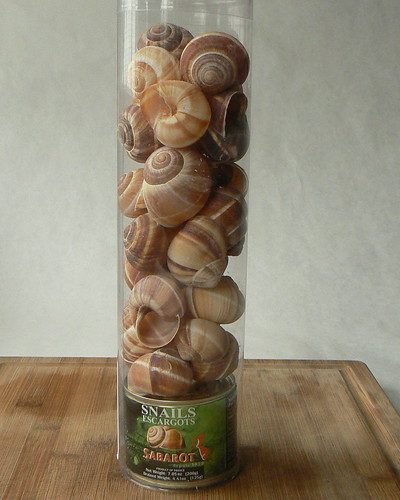
Shopping for snails triggered another memory. As I held the prize in my hand, I remembered going to the grocery as a kid with my mom. Short of the lackluster toy aisle, this column of shells was the most interesting item in the store. Now back in modern time, staring at the cockles, I thought about my new resolution. For the sake of research I would make canned snails, but I had to come up with some alternatives.

Escargot de Conserve à la Bourguignonne
I'll thank Elizabeth David for the name, but I would hardly call my recipe an adaptation. Snails have been prepared in the Burgundy way for centuries. The Oxford Companion to Food reports that snails became a fixture of Brasseries in Paris due to the fact that most were run by Alsatians, who were big time snail eaters. I can't say I agree with this theory, I think the snail's popularity comes more from the preparation: Just about anything tastes good smothered in garlic and butter. Let's go to the boards:
Beurre à la Bourguignonne (Snail Butter) (for 1 dozen snails)
120g /4oz /8T /1 stick Unsalted Butter
10g /2tsp Shallot minced
5g /1 large clove garlic minced
15g /1T Parsley chopped
Salt and pepper to taste

Soften the butter by beating it with a big stick or rolling pin. You don't really need the plastic.

Stir in remaining ingredients till it looks uniform, set aside.
For the snails, sauté them in a little butter, put in a splash of white wine and reduce. Let them cool a bit before stuffing. With clean shells take about a teaspoon of prepared butter and stuff it in the shell. Use your pinky finger to push it in far, then gently shove in a snail. Seal the hatch with another knob of butter.
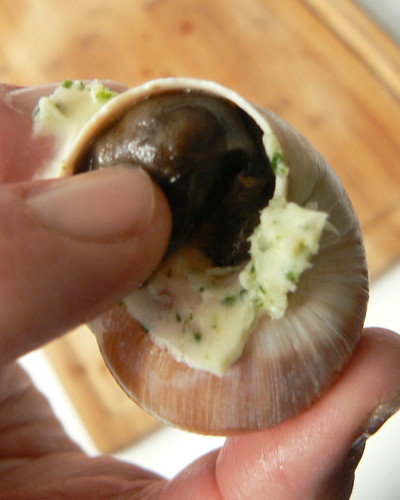
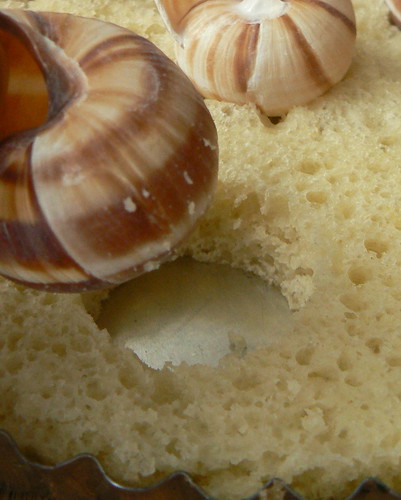
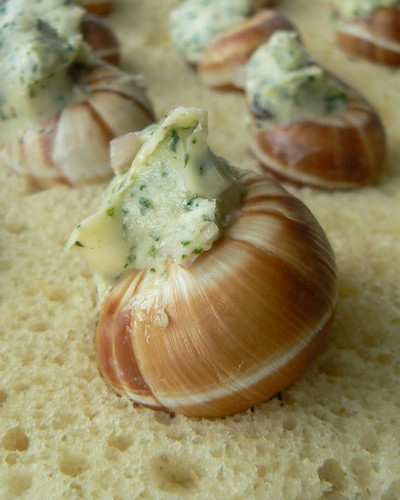
I don't have a snail plate so I used a focaccia trimmed for the occasion.

Pop into a hot oven and heat till the butter bubbles.
It's not too hard to reconstruct this French food memory at home, the can even had a pop top so I didn't have to use a can opener. The container had enough for two dozen snails.
For making mock snails,I didn't have to look much farther than my old copy of Larousse for an answer. Under the snail entry it gives a recipe for Mock Snails Comtesse Riguidi. It calls for lamb's sweetbreads and a chicken cream stuffing. Sweetbreads doesn't sound very snail like but fun. Now if I could only find some.

I called around to a couple of places and they said I could special order sweetbreads, but where's the sport in that? I moved on. At the same time I had been thinking about some sort of meat that would be a little chewy (snail-like?) and would have taste great smothered in butter and garlic. I picked up some pork hearts.
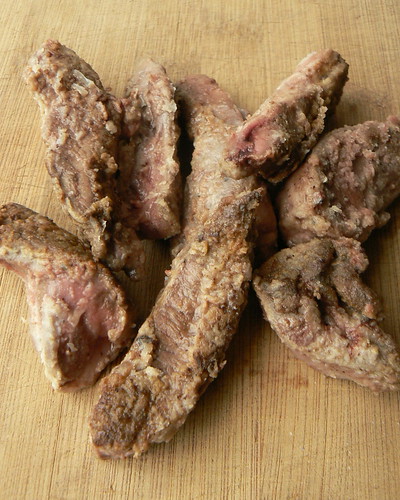
I removed the chewy bits and cut up the heart into snail sized strips. With salt pepper and a dusting of flour I sautéed the strips in butter. I let them cool before stuffing. One heart is plenty for 12 snails.

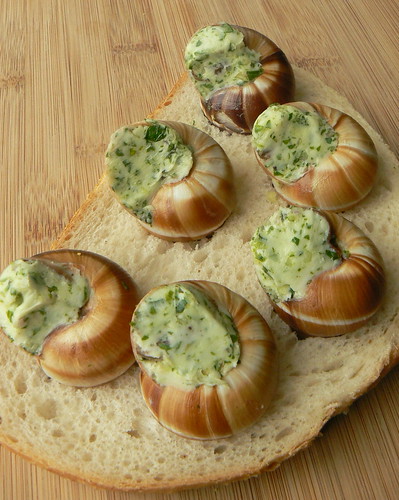

I used a bamboo skewer as a snail fork.

I also wanted to do something with mushrooms. I like the idea of mushrooms and snails coming from the same part of the forest, but how to make a mushroom look like a snail? I not much for sculpting with a knife so how about some sausage.
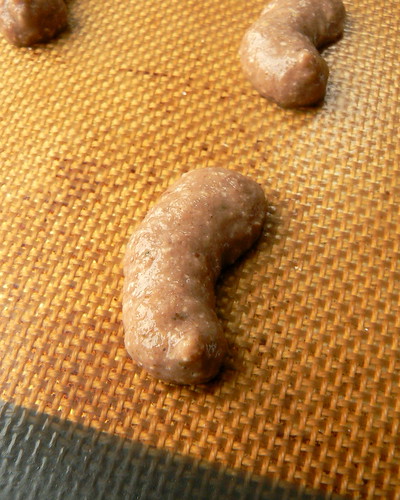
I combined all the ingredients in a food prcessor, blended to smooth then piped little snail shapes using a pastry bag with small tip. The mushroom snails baked in a 375F oven for 8-10 minutes.


Here are the quantities I used for 12 mushroom snails
120g /4oz Crimini mushrooms
20g Rolled oats ground fine in a spice mill
1 egg
2g salt
pinch of each and grind in the spice mill with the salt: Thyme, mustard seed, white pepper, 1 juniper berry.
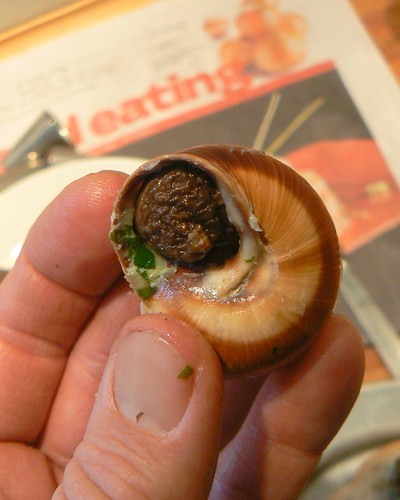
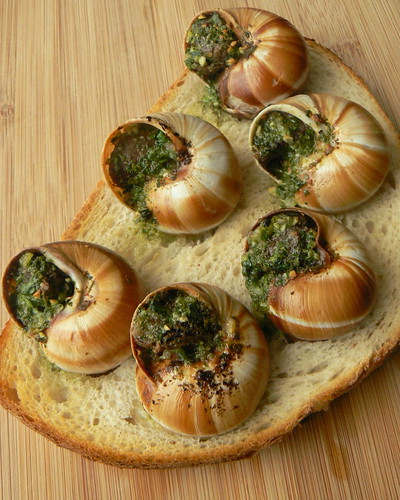

Over the past couple of weeks my family has eaten a lot of snails, Ok I've eaten a lot of snails, everybody else has just wondered when I would move on. The boys liked the pork heart (served over spaghetti) and the mushroom stuffing is really easy to make. As for going canless, I don't think that will be too hard, I don't need to buy anymore snails. But write in tell me what you can't live without in the can!
Cheers.
Book References (links to WorldCat, a library database)
The Oxford Companion to Food by Davidson
Good Things by Grigson (nice discussion but too much salt in her snail butter)
Larousse Gastronomique by Montagné
French Provincial Cooking by David
Posted by mac at 10:00 6 comments
Labels: Escagot, French Cooking, Mushroom Sausage, Pork Hearts, Snails

